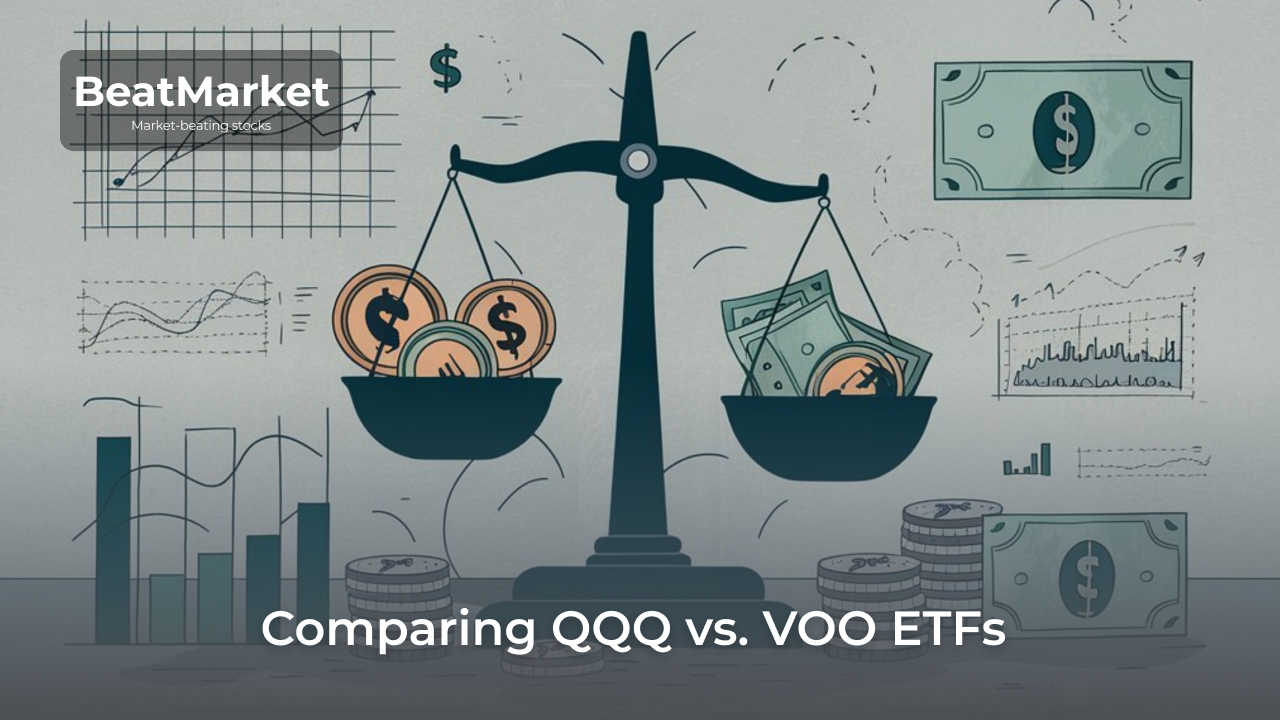Information Ratio (IR) stands as a pivotal metric in portfolio management, serving as a fundamental tool to assess investment performance’s risk-adjusted nature. By encapsulating the relationship between returns and volatility, the IR formula enables a comprehensive understanding of a portfolio’s effectiveness beyond mere returns, emphasizing the calculation’s significance in financial metrics. This article delves into the core components of the Information Ratio, elucidating its meaning, intricacies of calculation, and its indispensable role in evaluating investment performance while exploring its relevance within the realm of portfolio management.
Table of Contents
Key Takeaways
Key Points on Information Ratio in Investment Strategy:
- Evaluation Beyond Returns: The Information Ratio (IR) surpasses simplistic return assessments by factoring in risk. It’s pivotal for investors, offering insights into risk-adjusted returns, crucial for informed decision-making.
- Meaningful Financial Analysis: IR aids in comprehensive financial analysis by juxtaposing a portfolio’s returns against its volatility or risk. This metric unveils a deeper understanding of performance, transcending mere profit figures.
- Strategic Portfolio Management: For portfolio managers, IR serves as a guiding light, helping benchmark performance against a chosen standard. It empowers decision-makers to fine-tune strategies, aiming for optimal risk-adjusted returns.
What is the information ratio?
The Information Ratio (IR) is a vital metric used to gauge the success of an investment portfolio by assessing its risk-adjusted returns, offering a deeper understanding beyond conventional return measures. It compares the portfolio’s excess return over a chosen benchmark against the volatility or risk undertaken to achieve those returns. This metric is fundamental in evaluating portfolio managers’ efficiency in generating returns in relation to the risk they undertake. By contrasting a portfolio’s performance against a benchmark, the IR aids in comprehensively assessing risk, providing investors with crucial insights into the efficiency and effectiveness of their investment strategies. This comparison helps in identifying whether the returns achieved are a result of skilled management or simply due to taking on excessive risk. Understanding the nuances of the Information Ratio is indispensable in the realm of investment metrics, offering a sophisticated method for evaluating performance while considering the associated risk levels.
How to Use the IR
Utilizing the Information Ratio (IR) in making investment decisions plays a pivotal role in analyzing fund performance and shaping subsequent strategies. The practical application of IR involves strategically analyzing risks and adjusting returns, aiding investors and fund managers in making well-founded decisions.
The application of this metric allows professionals to delve deeper into fund performance by examining returns relative to assumed risks. In practice, IR helps discern whether a fund’s profitability stems from experienced management or results from excessive risk-taking. This distinction holds significant importance in allocating resources and optimizing portfolio structures.
Furthermore, the Information Ratio facilitates comparative analysis among different funds or portfolios, offering a standardized metric for evaluating their performance. Comparisons against selected benchmarks reveal outperformance or underperformance concerning the established standards.
For instance, suppose two investment funds exhibit identical returns. However, upon IR analysis, it might be revealed that one fund achieves these returns with lower risk, rendering it more favorable to investors.
Formula and Calculation of the Information Ratio (IR)
The Information Ratio (IR) formula serves as a crucial tool in evaluating risk-adjusted performance within investment analysis, providing insights into a portfolio’s efficiency beyond raw returns. The calculation of IR involves several steps aimed at quantifying the excess returns generated by a portfolio concerning a chosen benchmark, relative to the tracking error, which measures the volatility of these excess returns.
To compute the Information Ratio, the initial step involves determining the excess returns of the portfolio in comparison to the selected benchmark. This excess return is divided by the tracking error, which signifies the standard deviation of these excess returns over a specified period. Mathematically, the formula for IR can be represented as:
IR= Portfolio Excess Return Over BenchmarkTracking Error
Where:
- Portfolio Excess Return Over Benchmark represents the difference between the portfolio’s return and the benchmark return.
- Tracking Error denotes the standard deviation of these excess returns.
This calculation method provides a quantitative measure of a portfolio manager’s ability to outperform a benchmark while considering the risk taken to achieve those excess returns. A higher Information Ratio indicates that the portfolio has generated more significant excess returns relative to its tracking error, reflecting a more efficient risk-adjusted performance
Steps For Calculation
Calculating the Information Ratio (IR) involves key steps in investment analysis:
- Find Excess Returns: Calculate the difference between portfolio and benchmark returns.
- Compute Tracking Error: Measure the standard deviation of these excess returns.
- Use the Formula: Apply IR formula: IR = (Portfolio Excess Return) / (Tracking Error).
- Interpret the Result: Higher IR signifies better risk-adjusted performance, aiding in benchmarking and risk evaluation.
These steps offer insights into risk-adjusted performance, aiding decision-making by comparing investment strategies for optimal returns.
Examples
Examples of IR in action:
Fund Selection: Comparing two funds with 10% returns, Fund A has an IR of 0.8, while Fund B’s IR is 1.2. Fund B achieved the returns with lower risk, making it a better choice due to superior risk-adjusted performance.
Portfolio Comparison: Among portfolios with similar returns, Portfolio X has an IR of 1.5, and Portfolio Y has an IR of 0.9. Despite similar returns, Portfolio X generates higher returns per unit of risk, making it more favorable.
Strategy Evaluation: Evaluating different strategies, Strategy A’s IR is 1.0, while Strategy B’s is 0.7. Strategy A outperforms B on a risk-adjusted basis, guiding managers toward more efficient strategies.
How to understand the results of Information Ratio?
Understanding Information Ratio (IR) Results:
Interpretation: Higher IR values indicate superior risk-adjusted performance. For instance, an IR of 1.5 signifies the portfolio generated 1.5 units of excess return per unit of risk compared to the benchmark.
Investment Insights: Higher IR implies better risk-adjusted returns, aiding in evaluating investment strategies for optimal performance.
Performance Assessment: IR complements other metrics, offering a focused view on risk-adjusted returns. It helps compare investments and guides decisions toward superior risk-adjusted performance.
Risk Management: Lower IR values may signal excessive risk for lower returns, prompting a reevaluation of the portfolio’s risk profile.
Correlation Between Information Ratio and Risk-Adjusted Performance
The correlation between Information Ratio (IR) and risk-adjusted performance stands as a cornerstone in performance evaluation and risk management strategies. IR, measuring risk-adjusted returns, typically aligns higher values with superior risk-adjusted performance. Understanding this correlation guides professionals in identifying effective risk management strategies, ensuring portfolios are optimized for better risk-adjusted returns. This analysis serves as a crucial metric for evaluating strategies, aiding in decisions to achieve optimal performance while efficiently managing risk.
Information Ratio Сomparison with Other Performance Measures
Information Ratio Comparison with Other Performance Measures:
In conducting a comparative analysis of performance metrics within investment tools, the Information Ratio (IR) holds significance alongside other financial ratios. Assessing IR alongside metrics like Treynor Ratio, Appraisal Ratio, Sortino Ratio, Sharpe Ratio, and Alpha provides comprehensive insights into portfolio performance. IR, emphasizing risk-adjusted returns, offers a distinct view, while the Treynor Ratio evaluates excess returns concerning systematic risk. The Appraisal Ratio focuses on active management, Sortino Ratio adjusts for downside risk, Sharpe Ratio measures risk-adjusted returns against volatility, and Alpha quantifies excess returns relative to market performance. Analyzing IR in conjunction with these metrics aids professionals in gaining a comprehensive understanding of investment performance and assists in informed decision-making regarding portfolio strategies.
Information ratio vs. Treynor Ratio
In comparing Information Ratio and Treynor Ratio, both metrics assess risk-adjusted returns within investment strategies. Information Ratio focuses on excess returns relative to total risk, while Treynor Ratio evaluates excess returns considering systematic risk. While Information Ratio emphasizes overall risk, Treynor Ratio specifically measures the relationship between returns and systematic risk exposure. Professionals use these metrics together to gain a comprehensive view of risk-adjusted performance and make informed decisions in portfolio strategies.
Information vs. Appraisal Ratio
Comparing Information Ratio and Appraisal Ratio aids in performance evaluation and benchmark analysis in fund management. Information Ratio assesses risk-adjusted returns, while the Appraisal Ratio concentrates on evaluating active management’s performance against a benchmark. Information Ratio emphasizes the balance between returns and risk, while the Appraisal Ratio specifically gauges the excess returns generated by active management compared to the benchmark. Professionals utilize these metrics to comprehensively evaluate fund management effectiveness and benchmark analysis.
Information vs. Sortino Ratio
The comparison between Information Ratio and Sortino Ratio contributes to risk management strategies and assessing investment performance. Information Ratio evaluates risk-adjusted returns considering overall risk, whereas Sortino Ratio focuses on downside risk or volatility. While Information Ratio provides a broader view of risk-adjusted performance, Sortino Ratio specifically addresses the risk associated with unfavorable returns. Professionals use these metrics together to gauge both overall risk-adjusted returns and volatility-specific risk management strategies.
Information vs. Sharpe Ratio
In a comparative study between Information Ratio and Sharpe Ratio, both metrics assess risk-adjusted performance within investment analysis. Information Ratio measures risk-adjusted returns considering overall risk, while Sharpe Ratio evaluates risk-adjusted returns concerning volatility. Information Ratio emphasizes the balance between returns and total risk, whereas Sharpe Ratio specifically assesses returns in relation to volatility. Professionals use these metrics in tandem to gain a comprehensive understanding of risk-adjusted performance and make informed investment decisions.
Information vs. Alpha
Comparing Information Ratio and Alpha aids in evaluating performance metrics and investment returns. Information Ratio measures risk-adjusted returns concerning overall risk, while Alpha quantifies the excess returns generated compared to a chosen benchmark. While Information Ratio emphasizes risk-adjusted returns, Alpha focuses specifically on excess returns relative to the market. Professionals utilize these metrics together to comprehensively evaluate investment performance and benchmarking strategies.
The Bottom Line
The Information Ratio (IR) holds immense significance in shaping investment decisions. Its evaluation of risk-adjusted returns provides crucial insights guiding strategic financial planning and portfolio strategies. Understanding IR aids professionals in making informed decisions, ensuring portfolios are optimized for superior risk-adjusted performance. Its strategic importance lies in its ability to assess performance metrics comprehensively, aiding in effective financial planning and portfolio strategy for better investment outcomes.
FAQs
What is a good information ratio range?
A good Information Ratio (IR) range typically varies based on investment objectives and market conditions. However, generally, an IR higher than 0 is favorable. Often, an IR above 0.5 may indicate a strong risk-adjusted performance, but the optimal range can differ per industry or strategy. It’s crucial to consider benchmarking and individual investment goals when assessing IR.
What is the significance of the information ratio in investment management?
The Information Ratio is highly significant in investment management as it measures a portfolio manager’s ability to generate excess returns relative to risk taken. It aids in evaluating risk-adjusted performance, guiding portfolio analysis, and decisions. It provides insights into whether returns are a result of skill or excessive risk, crucial in optimizing portfolio strategies for better risk-adjusted returns.
What is considered a good information ratio?
A good Information Ratio varies across industries and strategies. Generally, an IR higher than 0 suggests positive risk-adjusted returns. However, considering benchmarking and specific investment goals is crucial. IRs above 1 might indicate superior risk-adjusted performance, but the definition of “good” depends on various factors, including market conditions and investment objectives.
What Is the Difference Between Information Ratio and Tracking Error?
The Information Ratio (IR) measures risk-adjusted returns relative to a benchmark, while Tracking Error quantifies the volatility of excess returns. IR focuses on assessing performance in relation to risk, whereas Tracking Error specifically measures the volatility of the excess returns. IR indicates how efficiently returns are generated concerning risk, while Tracking Error quantifies the volatility of those returns around the benchmark.
Can an Information Ratio Be Negative?
Yes, an Information Ratio can be negative. A negative IR suggests that the portfolio’s returns are lower than the benchmark, considering the level of risk taken. It indicates underperformance against the benchmark in terms of risk-adjusted returns, signifying that the portfolio’s risk might not have been justified by its returns.







